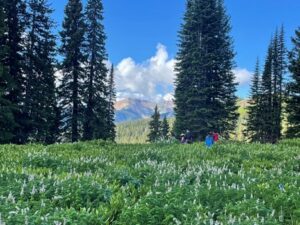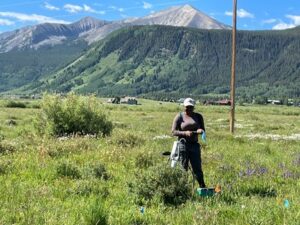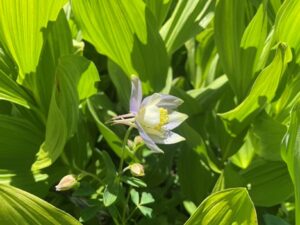The experimental plant physiology group from Texas Tech University (TTU) traveled to the Rocky Mountains to test eco-evolutionary optimality theory along a >1000-meter elevational gradient in support of the LEMONTREE project. The work originated in collaboration with other scientists at the Rocky Mountain Biological Lab, notably Lara Souza (University of Oklahoma), Aimee Classen (University of Michigan), Rose Brinkhoff (University of Michigan), and Brian Enquist (University of Arizona). The TTU team included Nick Smith, Brad Posch, and Zinny Ezekannagha.
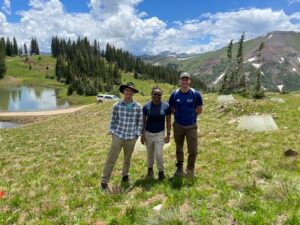
The goal of the 10-day sampling trip was to measure plant traits at 9 sites along the elevational gradient. targeting the dominant species at each site as well as species that occurred at multiple sites along the gradient, allowing us to assess both within- and across- species responses. The traits measured included photosynthetic biochemistry from CO2 response curves of photosynthesis (i.e., Vcmax and Jmax from A/Ci curves), specific leaf area, leaf carbon, leaf nitrogen, and leaf isotopic composition.
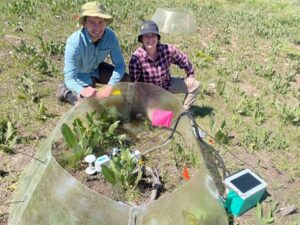
The traits measured will be used to test eco-evolutionary optimality theory that predicts how the traits will vary across the elevational gradient. The theory predicts that the traits will vary both in response to the climatic differences that occur along the gradient, as well as the atmospheric pressure changes that occur with changes in elevation. For instance, the theory predicts that investment in photosynthetic biochemistry will increase as elevation increases as a result of a reductions in temperature and atmospheric pressure. However, along the gradient, aridity decreases as elevation increases, which should decrease investment in photosynthetic biochemistry. The measurements will test which factors drive the change in plant investment along the gradient.
Once the data are processed, Brad will help to lead the data analysis. This will include model-data comparisons to test theory. In addition, we will examine drivers of deviation from the theory that may arise in certain individuals and/or species. These will be used to infer areas in which the theory could be improved and help us to target future measurement campaigns. We will also be working with the Enquist group on examining responses over time, as the sites measured have been sampled for leaf traits for over a decade. In addition, we are partnering with the Classen group to examine traits responses with elevation in combination with responses experimental warming (open-top chambers) at a subset of sites. The warming data examination will be led by Rose Brinkhoff (U. Michigan) in collaboration with the TTU group.
The work was done at and in conjunction with The Rocky Mountain Biological Lab (RMBL), located in Gothic, Colorado. RMBL is a special place that brings together scientists studying all aspects of montane biology, including plants, animals, fungi, and bacteria. The lab collaborates with public and private landowners to establish projects designed to better understand the local flora and fauna and their responses to a changing climate. More about the lab, its mission, and their scientists can be found at rmbl.org.
The field sampling campaign was graciously supported by the LEMONTREE project, funded through the Schmidt Futures VESRI program.
Now back in Lubbock, we are missing the cool air and beautiful scenery of the mountains. We can’t wait to get back up there next year!
-Nick Smith (Texas Tech University)
